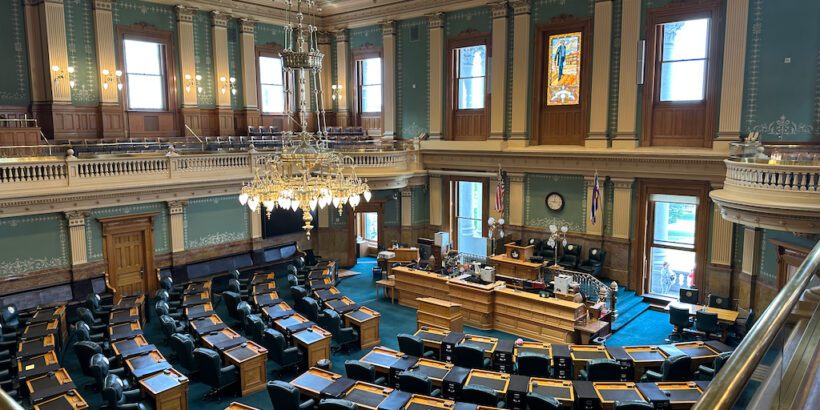There’s just something about visiting state capitals that is so charming and interesting.
Within their hallowed halls, colossal government decisions take shape, impacting the lives of countless individuals annually. If only the walls could whisper their stories, they would regale us with captivating tales of power, progress, conflict, and change.
Yet, state capitals are not mere bureaucratic centers; they are treasure troves of history, where the past echoes through opulent architecture and resonates within artistic masterpieces. And in Denver, the Colorado State Capitol epitomizes this.
Below, I’ll give you everything you need to know about visiting the Colorado State Capitol. I’ll provide you with the inside scoop on the tours and some interesting information to help you best prepare for your visit! I’ll also share a lot of photos of the Capitol, giving you a virtual tour of sorts.
How to tour the Colorado State Capitol
The Colorado State Capitol is open Monday through Friday from 7:30 AM to 5 PM.
The tours of the Capitol building are offered Monday through Friday and are 100% free. Typically, the daily tours are offered four times a day: 10 AM, 11 AM, 1 PM, and 2 PM. Each tour is limited to a total of 15 people and is offered on a first-come, first-served basis.
Because the tour schedule is subject to change, it’s a good idea to contact the Capitol before visiting. You can do so by calling 303-866-2604.
If you’re coming in with a vehicle, recommended parking garages include: Denver Post Building Garage and Cultural Center Complex Garage. There is some street parking available around the perimeter of the park but it is limited in availability.
Personally, we like to park at the Cultural Center Complex Garage because it’s so easy to find a spot and they also have EV parking.
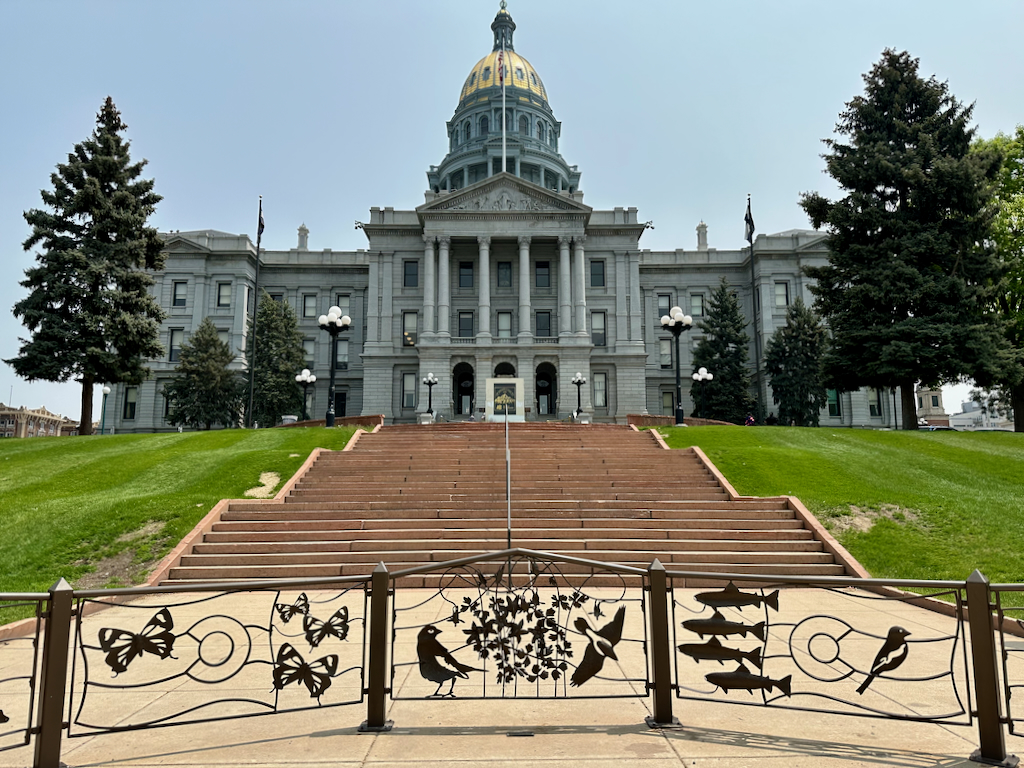
Our experience touring the Colorado State Capitol
We arrived around 10:30 AM to the capitol building after not having any luck with openings for the US Mint Tour.
We made our way through the security line and then went up to the front desk to schedule a tour. They told us that one would be available at 11 AM, took down our names, gave us our tour stickers, and then all we had to do was wait around a little bit.
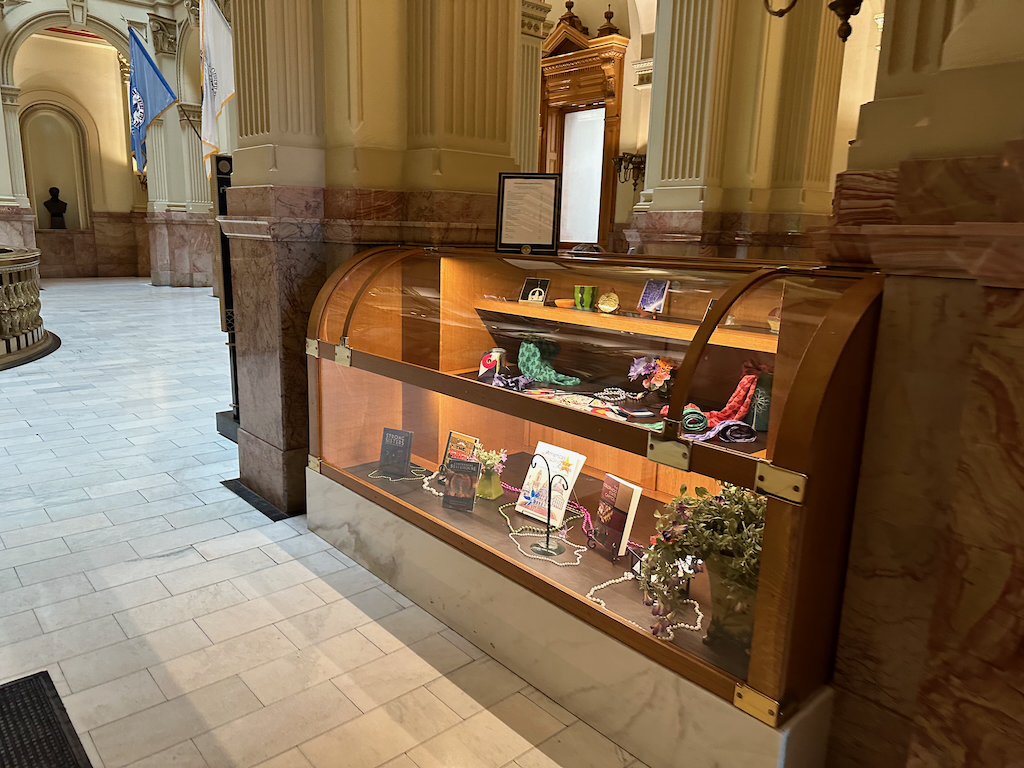
If you plan on doing the capital tour I would suggest you to do three things:
First, if it’s going to be a warm day, consider wearing lightweight clothes or layers that you can remove later, as it tends to get quite warm inside the Capitol building.
Second, have a bottle of water with you as you will probably work up some thirst. If you go downstairs there is a snack bar so you can grab a snack or perhaps some water before you start your tour.
Thirdly, be sure to pick up the Colorado State Capitol visitor guide, which is available right after passing through security. It contains a useful map at the back that will help you navigate this immense Capitol building.
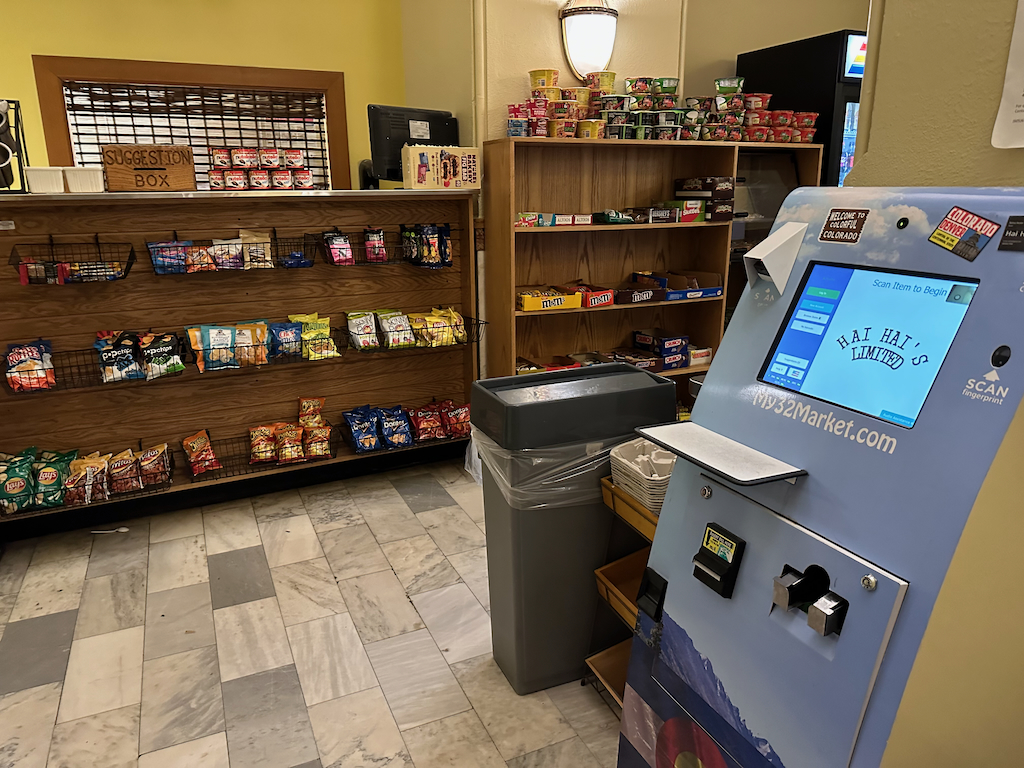
Right at 11AM, we met up by the flags near the information desk and our guide was right on time.
She was very friendly and knowledgeable and gave us a lot of insight into the history of the state of Colorado to kick off the tour.
We proceeded to the “Women’s Gold Tapestry,” a hand-stitched embroidery measuring 9 x 12 feet. It took 4,500 hours and two years to complete, and serves as a tribute to the bravery, resilience, and sacrifices of women in Colorado. You can delve into the tapestry’s story and explore the history it portrays with your guide, including the legacy of Mother Cabrini.
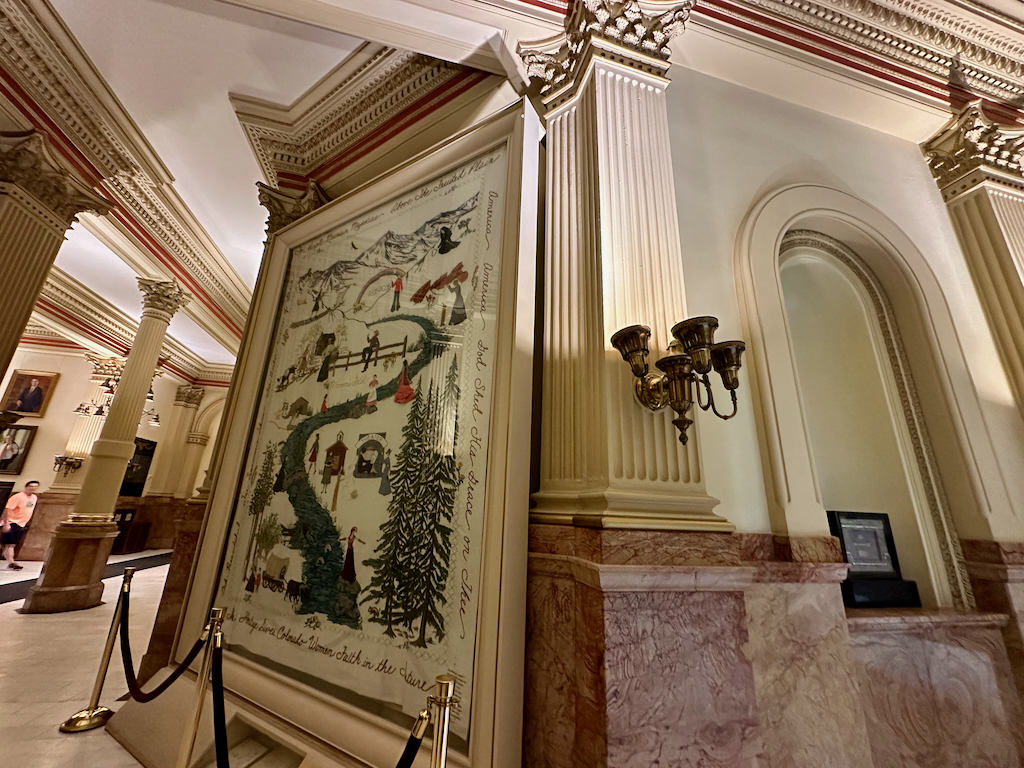
Our guide then told us about some of the fascinating details regarding the Capitol’s construction and design.
To my surprise, I learned that the architect responsible for this building, Elijah E. Myers, also designed the capitol buildings in Texas and Michigan. It took 15 years to finish the building which occurred in 1901 although some of the offices were in use before then.
The original building committee was determined to utilize local materials, and thus it comes as no surprise that the exterior of the capitol building, with walls up to 5 feet thick, is constructed from granite sourced from Gunnison, Colorado.
And the gold dome? It was adorned with thinner-than-tissue-paper gold leaf back in 1908, using gold sourced from a Colorado mine. In 2013, the gold was refreshed with 149 gold rolls, totaling 64.5 ounces of gold.
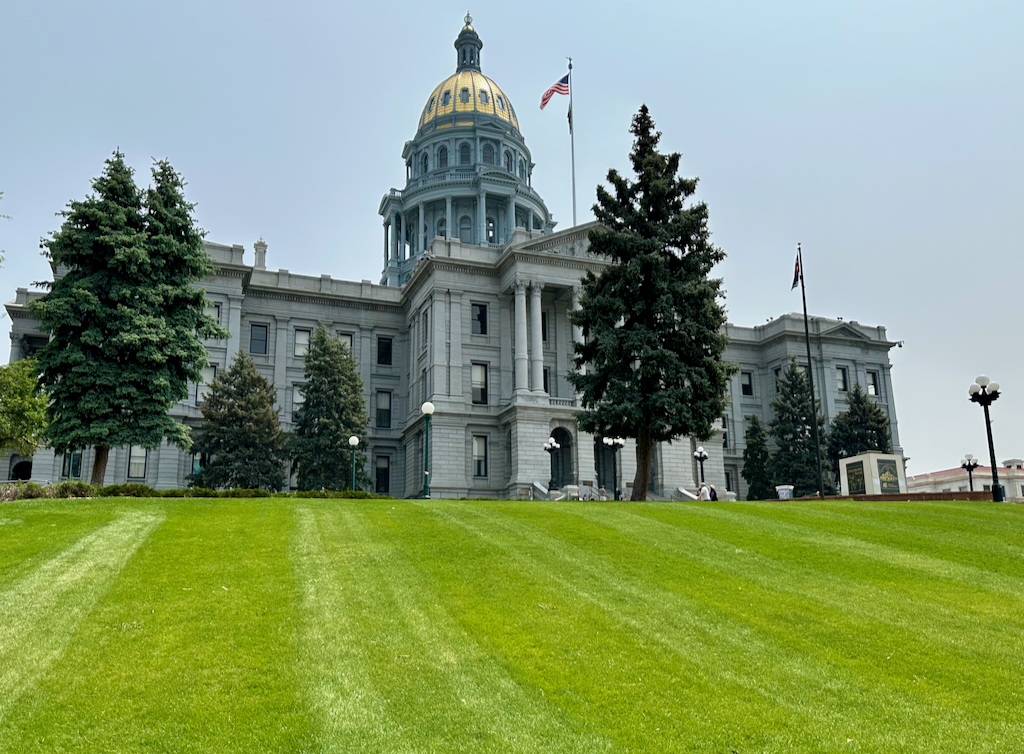
Another unique and noteworthy feature of the building is the onyx used in its construction. The exquisite pinkish stone, known as “rose onyx,” was found in Palua, Colorado (the stone is actually a form of oxidized limestone).
The installation of this rare onyx took seven years to complete, and it is said that this particular type of onyx cannot be found anywhere else in the world.
Within the intricate patterns of this onyx, observers over the years have discovered a captivating menagerie of shapes, ranging from the silhouette of a turkey to the iconic visage of Molly Brown herself!
Seeing this rare stone up close is a treat and allowing your imagination to unravel the secrets hidden within the walls is definitely a highlight of the experience.
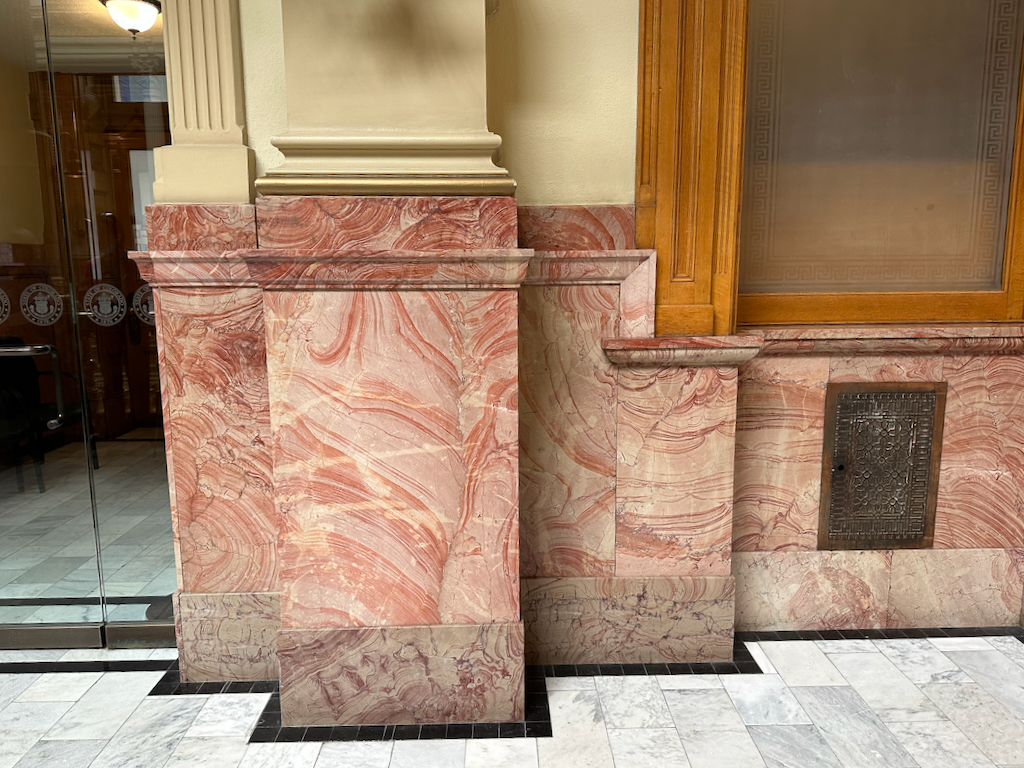
The floors also hold significance as they are made of Yule marble from Marble, Colorado. This is the same type of marble used in the Tomb of the Unknown Soldier and at the Lincoln Memorial in Washington, D.C, forging an interesting link between these esteemed structures and lending an air of shared history.
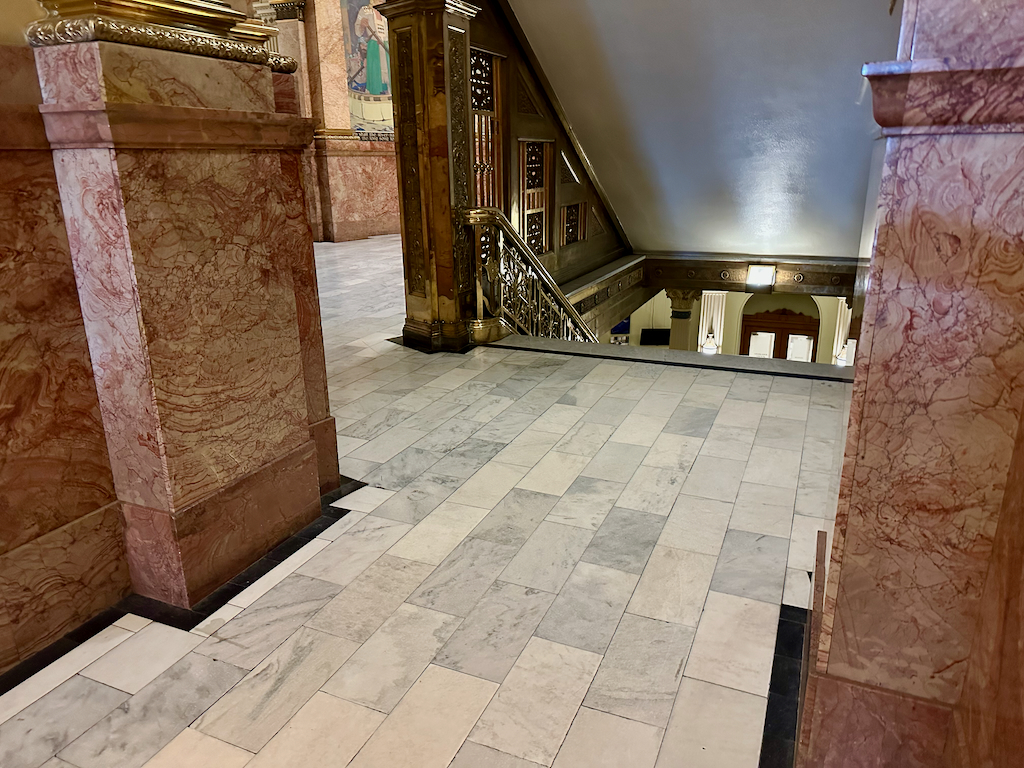
The only exceptions to Colorado-sourced materials are the brass and white oak found amid these stately quarters.
The intricately carved white oak, embellishing specific doorways, originates from the Ozark mountains in Arkansas and Missouri, while the brass used in the light fixtures and balusters was cast in Louisville and Cincinnati.
The light fixtures found in the Capitol building are intriguing because they were created during a period when builders harbored doubts about electrical lighting. As a result, they were constructed with the versatility to be powered by either gas or electricity.
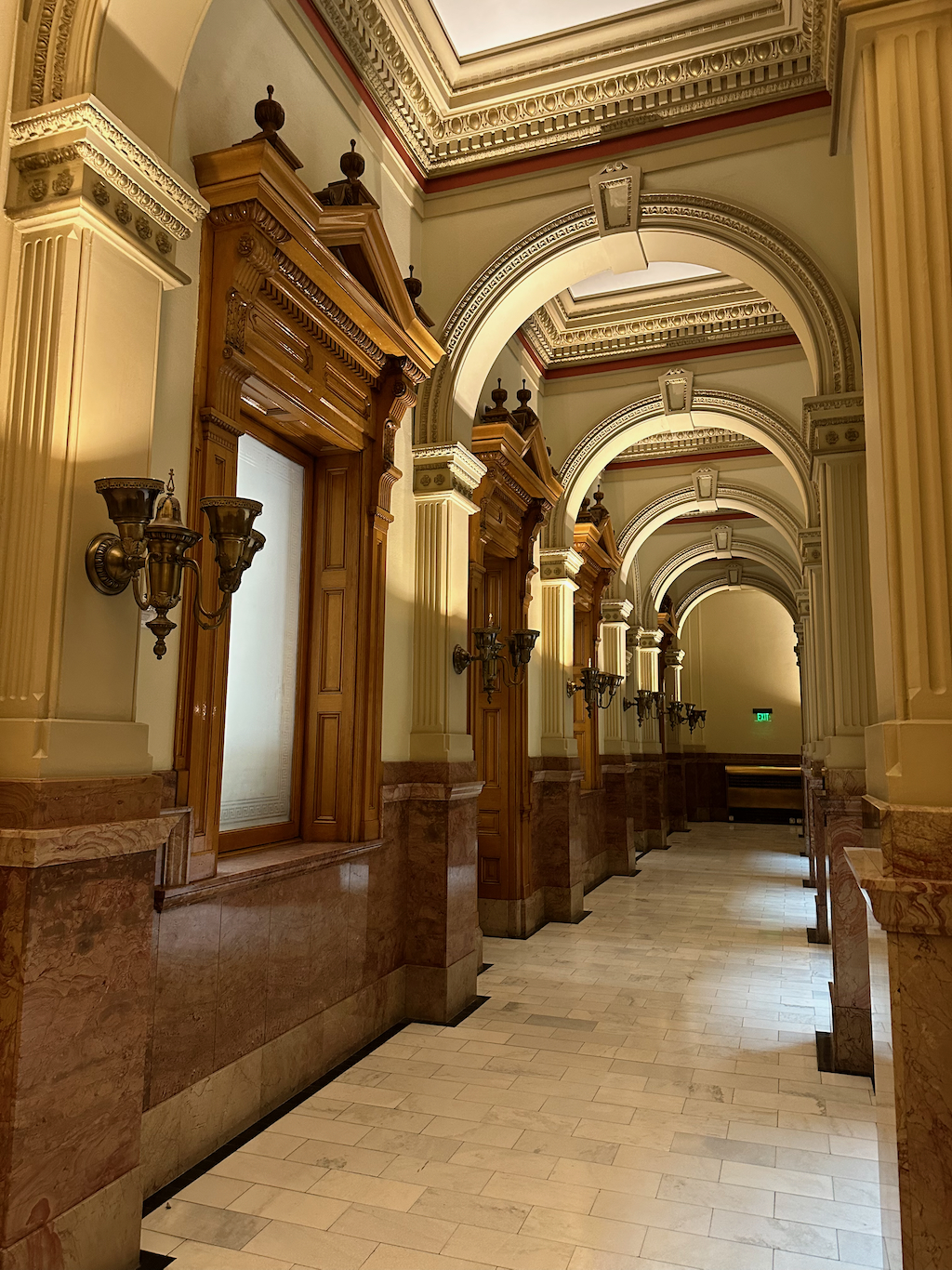
After getting the scoop on all of the building materials, we then made our way over to the grand staircase which is a beautiful staircase found in the heart of the rotunda on the first floor. It features 57 steps and 176 brass balusters and if you ask me, it’s quite a masterpiece.
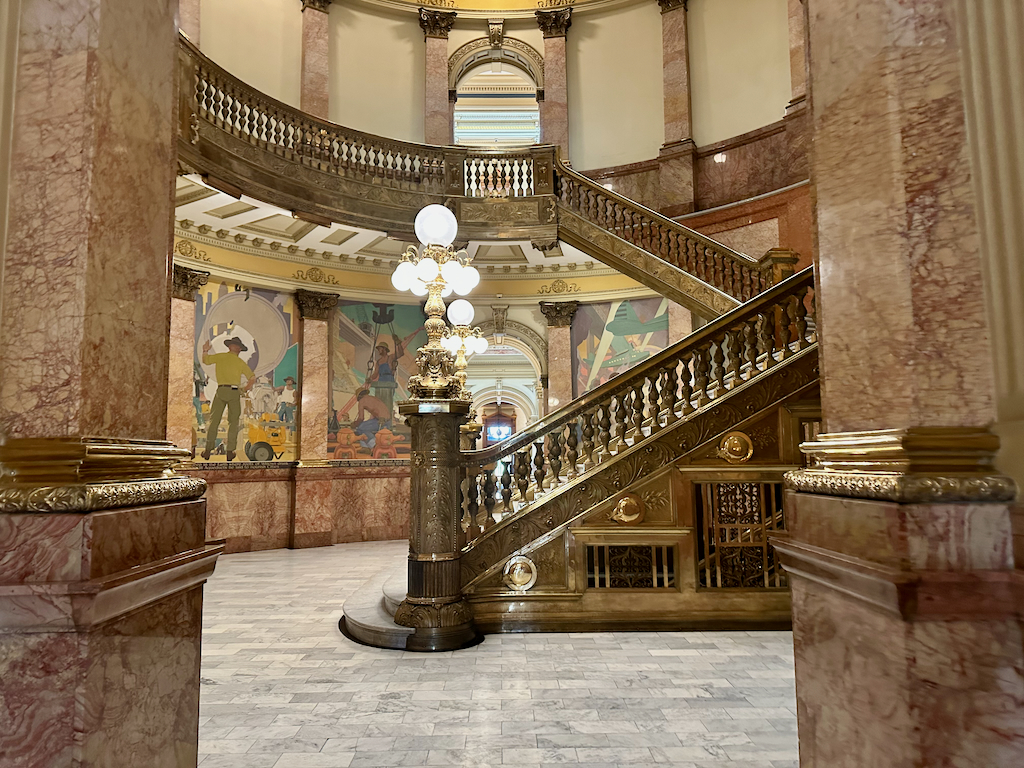
It’s adorned with oak leaves and acorns cast in brass. Don’t forget to cast your eyes skyward and behold the awe-inspiring sight of the rotunda ceiling which rises about 180 feet above you.
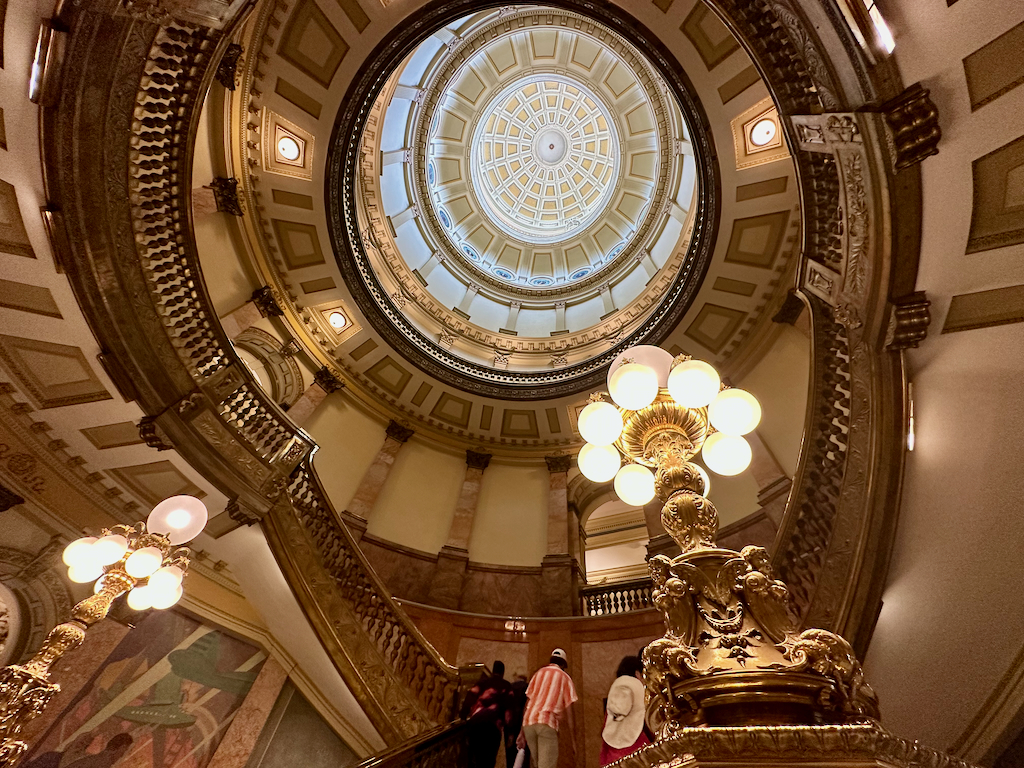
Surrounding the staircase are eight murals completed in 1940. They depict the story of Colorado’s water, accompanied by the poetic words of Thomas Farrell.
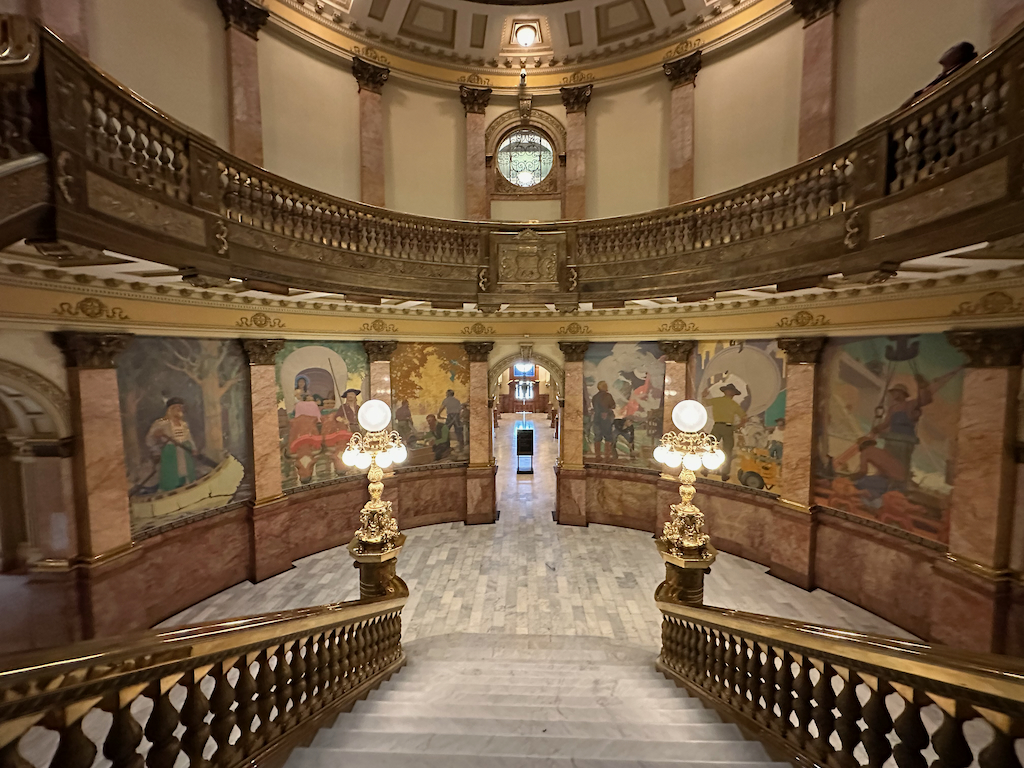
The artist behind these murals, Allen True, also painted some of the murals found in Civic Center Park.
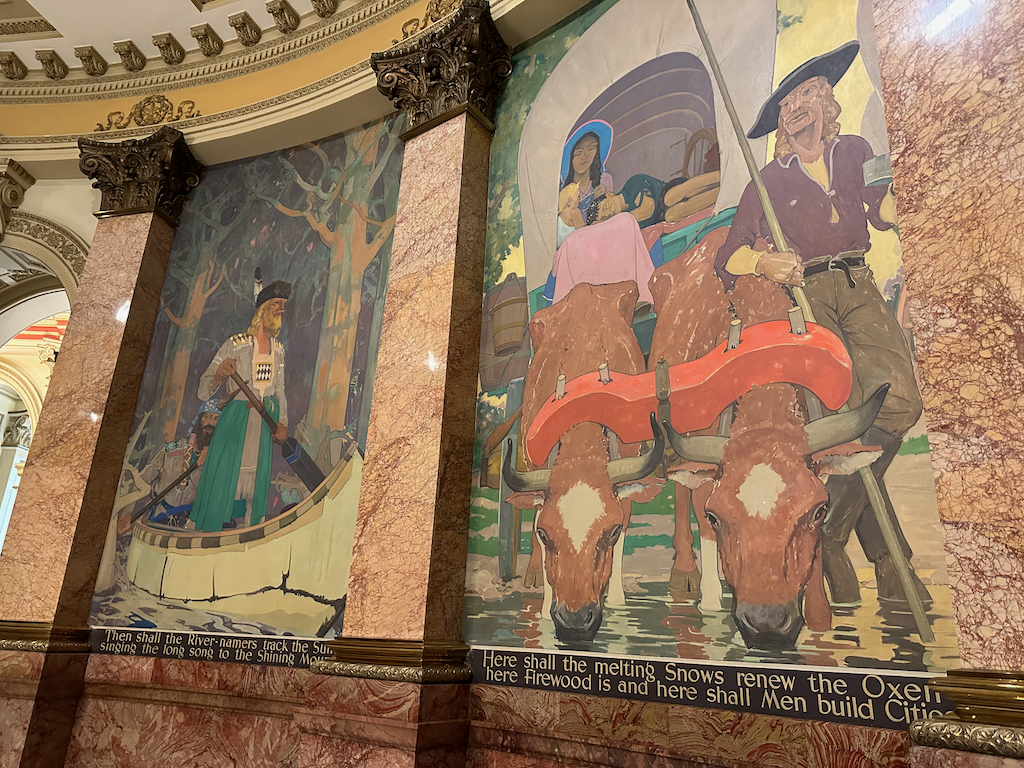
After examining the murals, we proceeded to the second level to catch a glimpse of the former Colorado Supreme Court, situated in the northern wing of the Capitol building. It is worth noting that the Supreme Court has since been relocated just across the street, so now this historic room is used for legislative meetings and hearings.
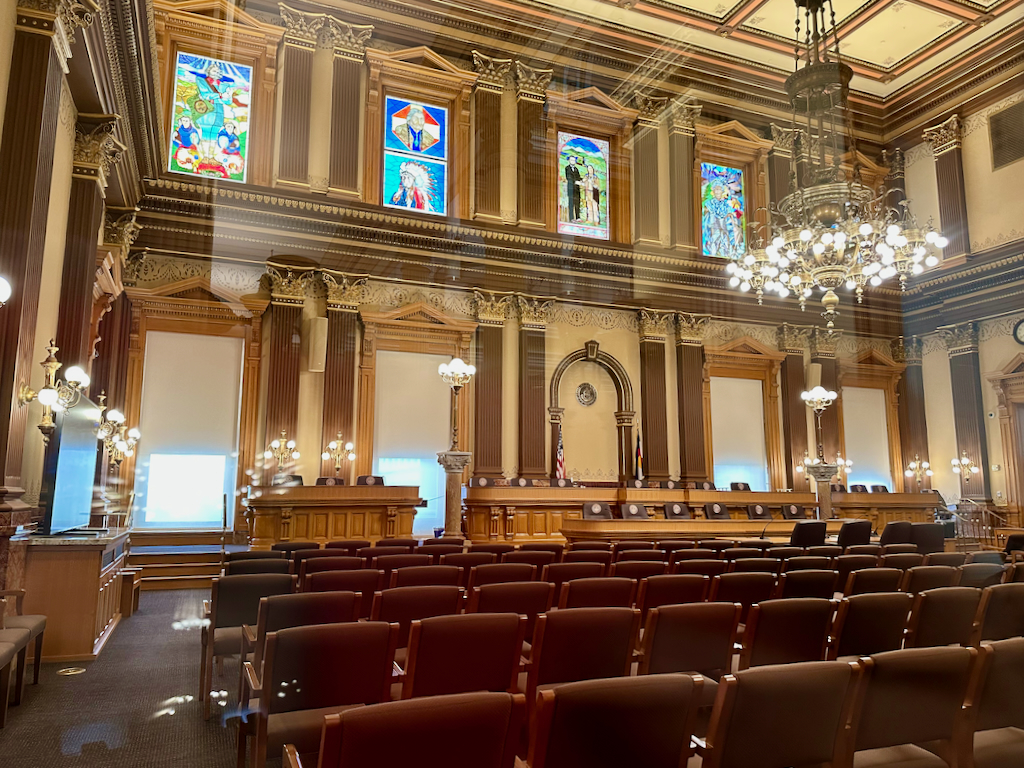
After that, we would take the stairs up to the third-floor although if you are not able to take the stairs or choose not to, there are accessible elevators.
We headed to view the impressive House of Representatives, where lawmakers convene to debate and shape the future of Colorado.
In Colorado, it comprises 65 members who serve two-year terms, with each member representing approximately 89,000 people. Be sure to take note of the rules before entering the room, including the requirement to remove your hat.
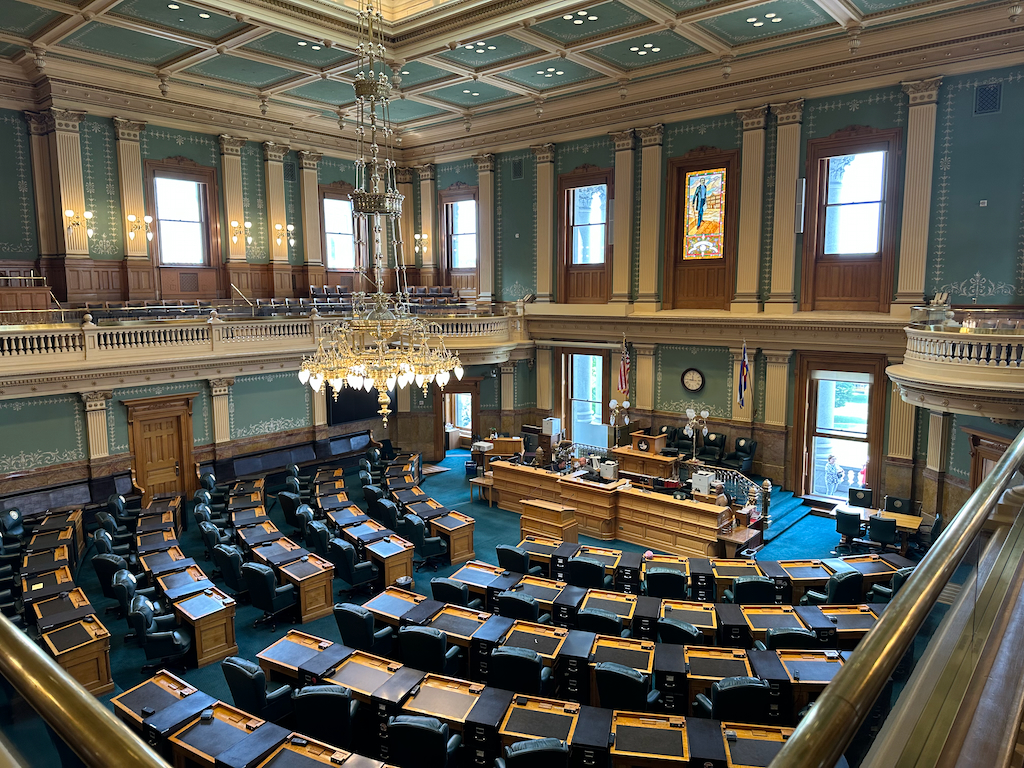
You can also go into the Senate chambers although on the tour for the sake of time they did not take us through there (we visited it later).
It’s another beautiful venue that is located on the same floor as the House. You’ll see 11 windows on the back wall of the Senate chamber but there are actually 12 windows as one is hidden right behind the Senate presidents dais.
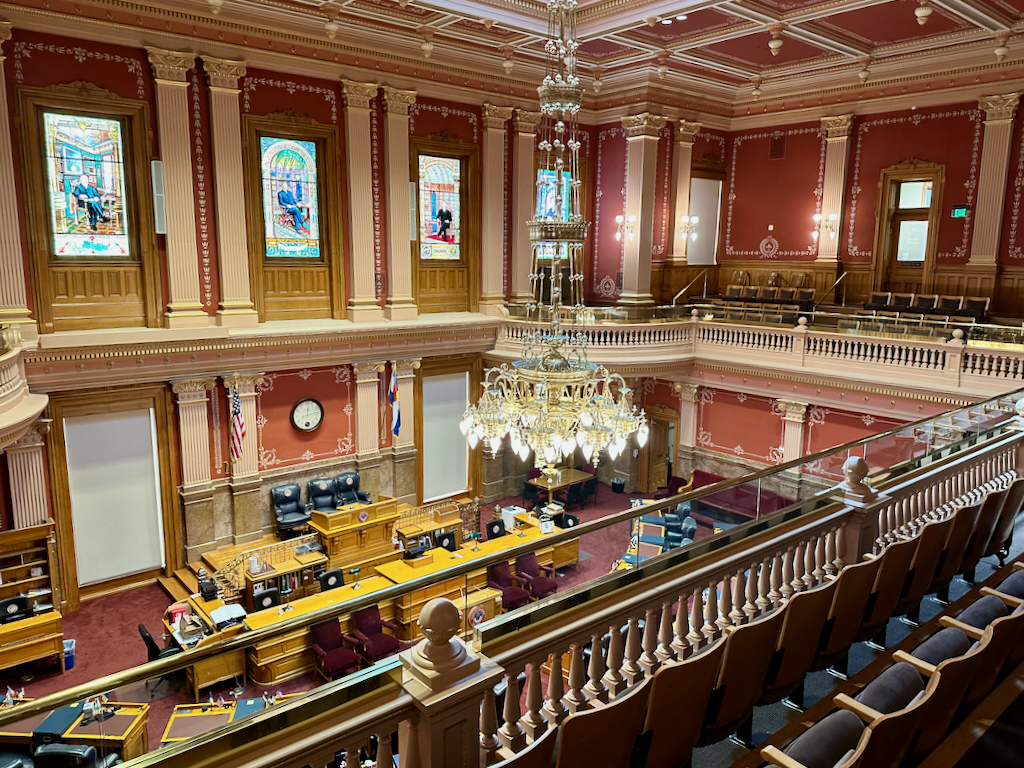
On that level, you can also explore the Senate hearing rooms and a press room where you have the opportunity to stand behind the podium and capture a stylish photo.
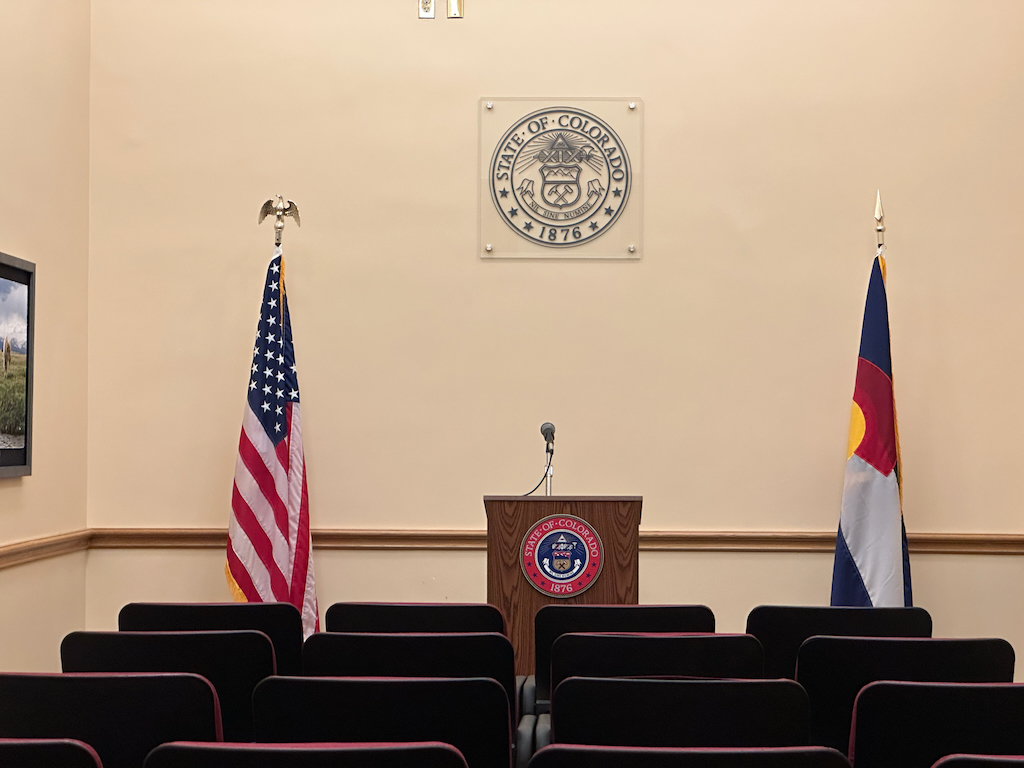
Next, we visited the rotunda where you’ll find portraits of all the presidents of the U.S. The portraits are displayed once the president’s term is completed, which is why we didn’t see Joe Biden in 2023. This was one of my favorite parts of the Capitol, as it’s a very beautiful area.
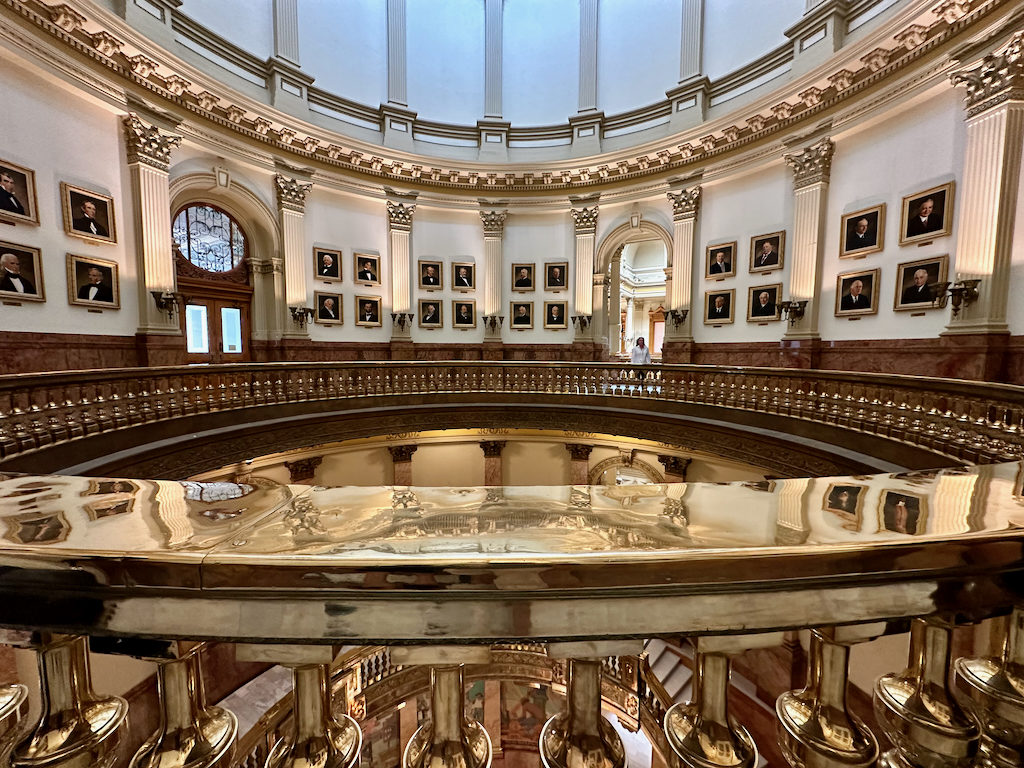
Then it was time for the tour to head up beyond level 3.
There are no elevators to head up there so if you have mobility issues and/or the idea of hitting up 99 stairs does not appeal to you, you may want to opt for a different option which is a video that plays and shows you what you would be seeing.
We opted to take the stairs up which honestly were not that bad.
First, you’ll go up a few sets of stair cases which takes you to a small museum.
The museum, which is called “Mr. Brown’s attic,” covers all things Colorado and has some interesting insight into the capitol. This area is open to the public (no tour needed) between 10 AM and 3 PM and you find it between level three and the dome.
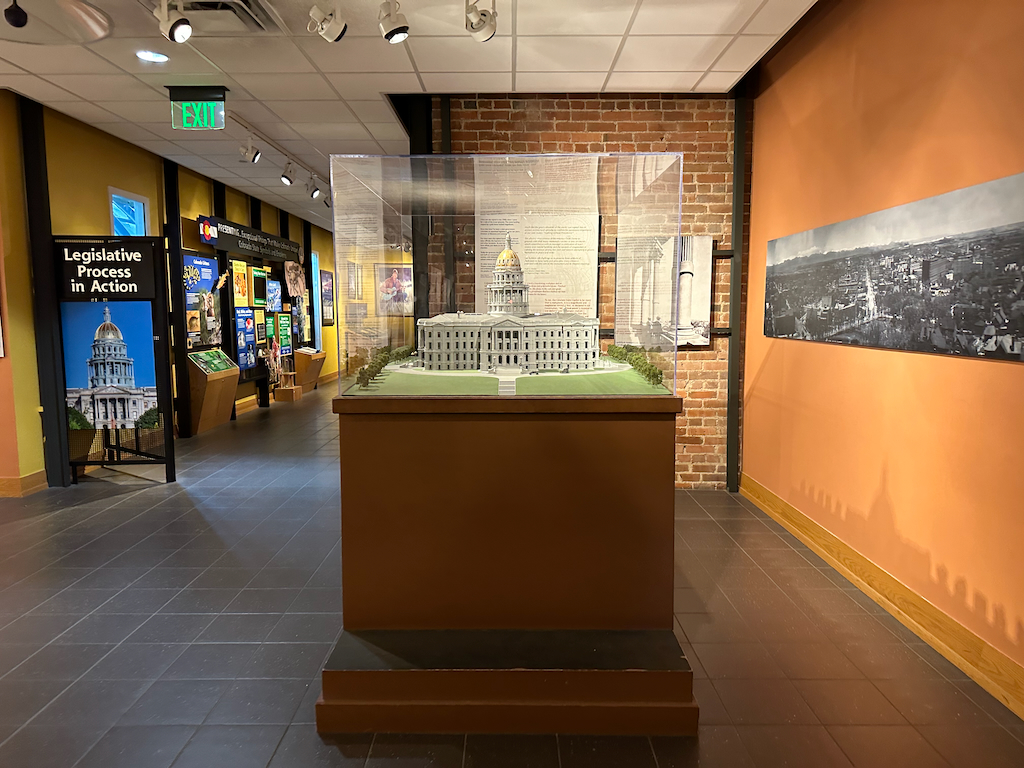
If you’re taking the guided tour, you can continue on for the dome walk. You’ll be handed off to some guides who will take the group up some fairly narrow stairs to the observation deck.
The stairs might seem a bit daunting, but before you realize it, you’ll be up at the observation area.
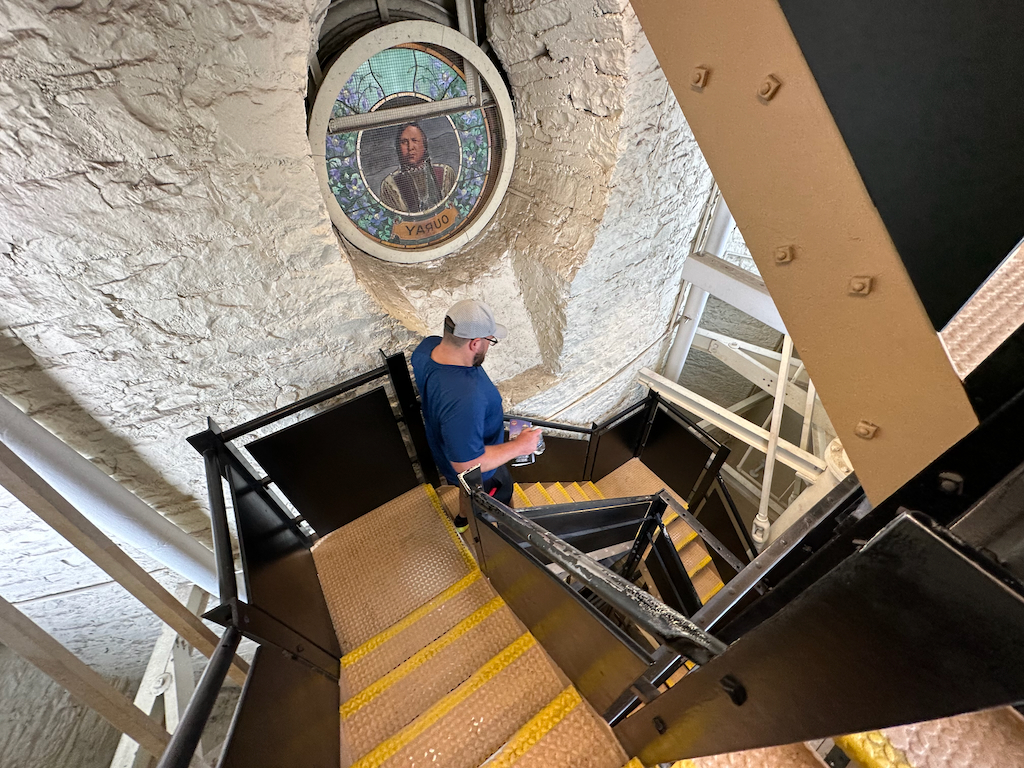
From the dome there are some great views of the Denver skyline, the City and County building across from Civic Center Park, and often the Front Range mountains. During our visit, a delightful breeze swept through, making the experience even more enjoyable and I’d even say romantic.
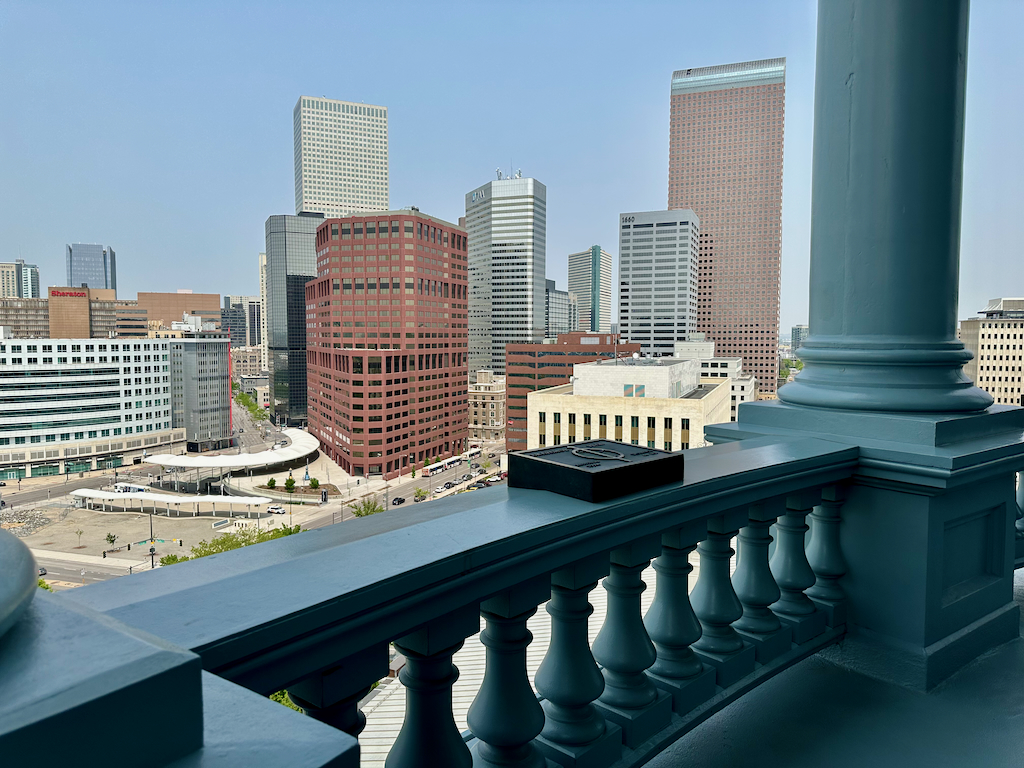
While the temperature was great, we visited on a day when the smoke was still clearing from fires but we could just barely make out some of the mountains.
Up there you’ll also find markers that indicate the direction of famous landmarks such as Pikes Peak.
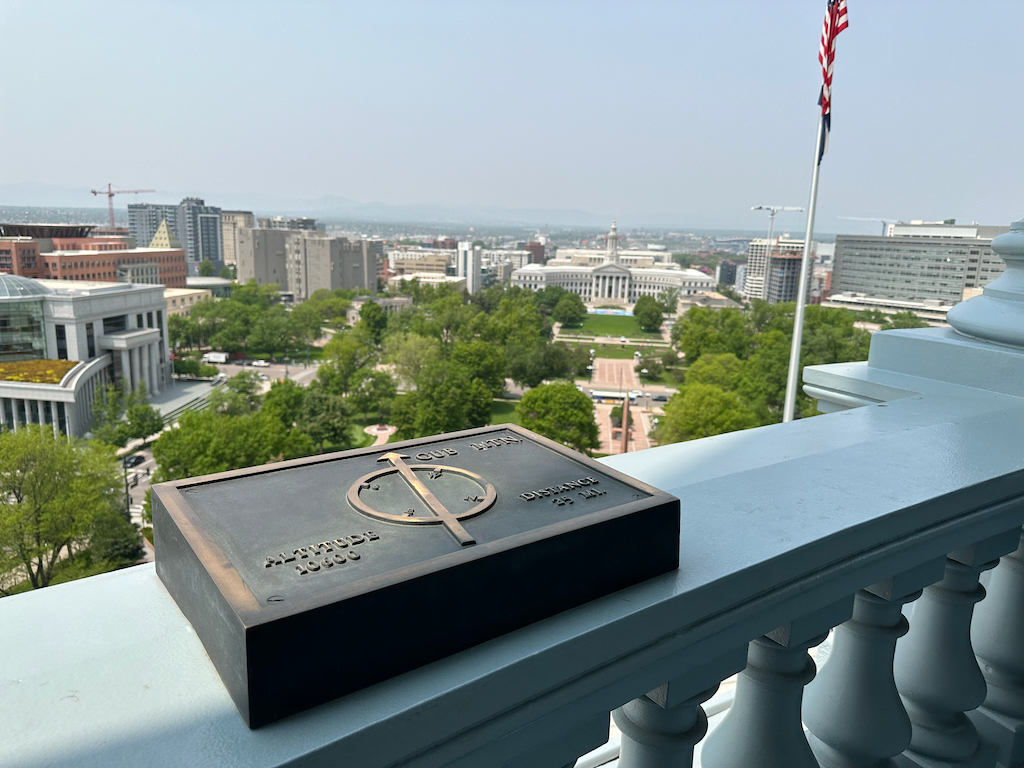
While you’re up there, take a moment to admire the stained glass windows below.
Installed in 1900, these 16 windows form the renowned Colorado Hall of Fame. There are little interpretive panels hanging on the railing that you can read to learn a little bit more about each of these individuals such as John Evans, the founder of the University of Denver.
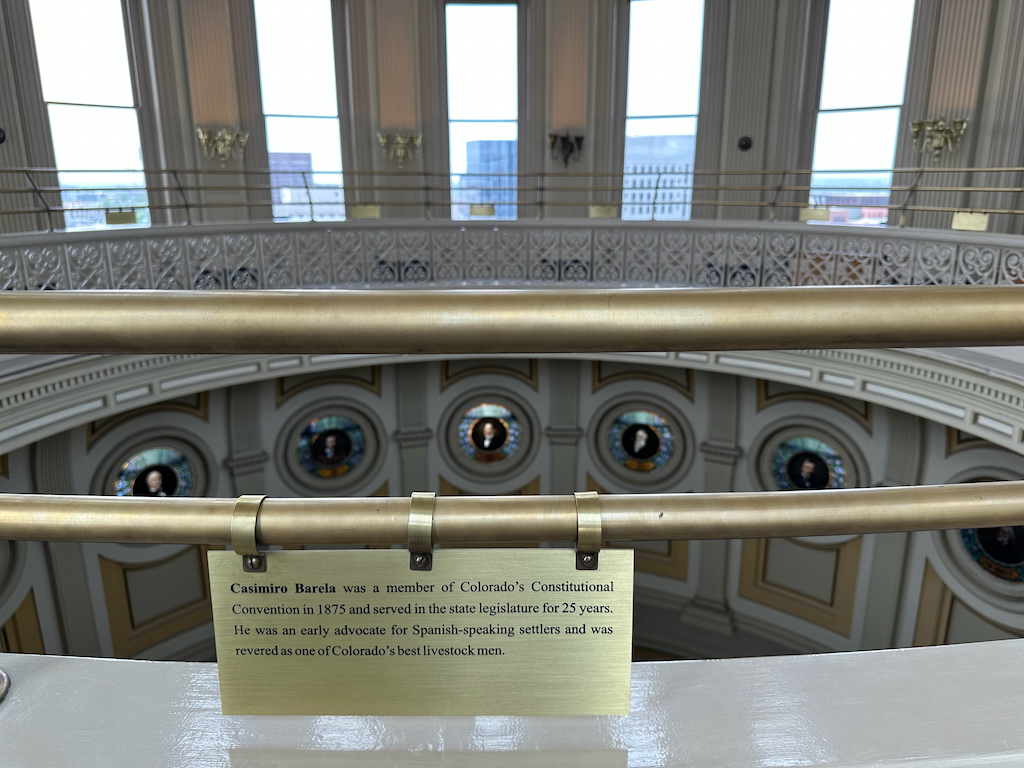
A gnarly spiral staircase heads up a few more stories but that staircase was off-limits to us.
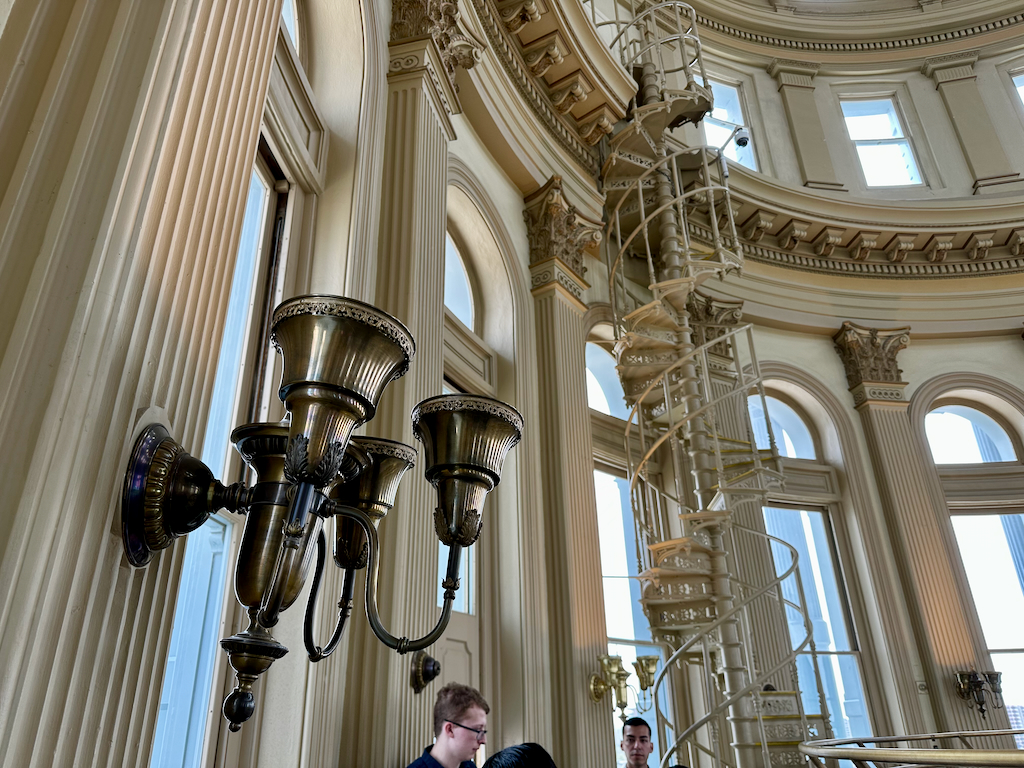
After the tour, we were able to head down from the observation deck and then explore the Capitol building ourselves.
Make sure that you head out to the front of the building to check out the famous “mile high” steps which have their own unique history.
There are multiple markers on the steps which illustrate how advances were made in surveying and engineering over the years as surveyors attempted to precisely determine the elevation of the steps.
If you’re looking for the official marker, it’s going to be on the 13th step which was installed in 2003 and as far as we know, it’s the most accurate.
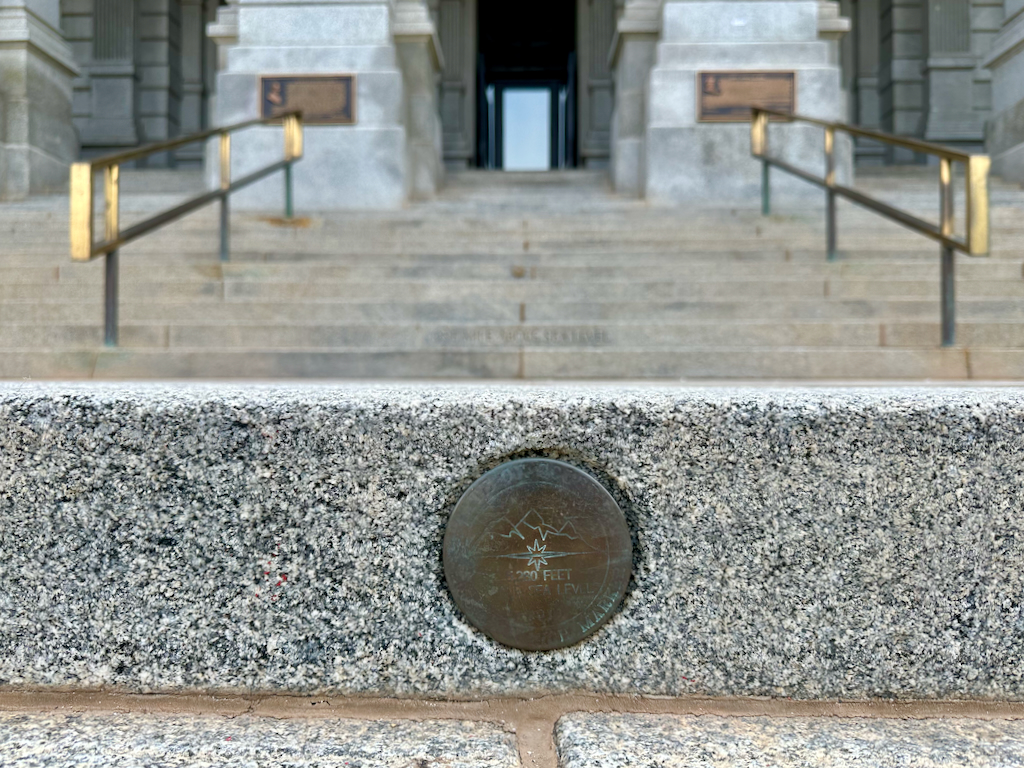
Final word
Overall, I enjoyed our tour and it did help to get some special insight into the formation of the state of Colorado and the Capitol building itself. If you’re the type of person who likes to follow along on tours, I think it’s worth it especially because it’s completely free.
Personally, I’d like to do my own exploring and with the visitors guide and a little bit of pre-visit research, I think you could probably appreciate everything on your own without missing out on too much if you choose to not do the tour.
However, the one big thing you will miss out on is being able to climb up into the dome and appreciate the views and architecture up there which is definitely a major highlight of the tour.
Daniel Gillaspia is the Founder of UponArriving.com and the credit card app, WalletFlo. He is a former attorney turned travel expert covering destinations along with TSA, airline, and hotel policies. Since 2014, his content has been featured in publications such as National Geographic, Smithsonian Magazine, and CNBC. Read my bio.

